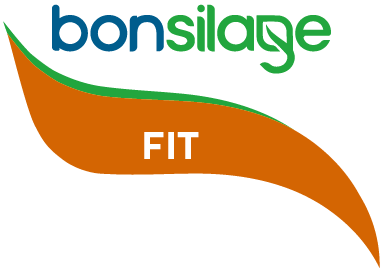
Bonsilage FIT
bonsilage FIT optimises the energy properties of your silage and provides high aerobic stability.
80% of dairy cow diseases occur during calving. This is often due to an energy deficit, which leads to metabolic disorders and other diseases.
bonsilage FIT optimises the energy properties of your silage and provides high aerobic stability.
Feed-related diseases such as acidosis and ketosis can be influenced by using silage additives. The formation of glucoplastic components such as propylene glycol relieves the cow’s metabolism at the start of lactation – for measurably improved cow fitness.
Key Benefits:
- Increases aerobic stability and improves palatability
- Forms propylene glycol protecting against ketosis
- Reduces lactic acid content and increases the content of physiological acetic acid
for better protection against acidosis - Supports the metabolism and cow fitness